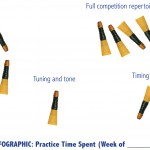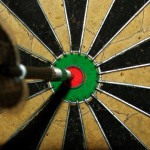Hack Your Practice: Big Bagpiping Improvement Leaps with Marginal Gains
Is the end of another bagpiping season upon us already? Where does the time go? The weather here on the east is getting cooler and the AC is not cranking like it was. It is the perfect time of year to reflect on one’s bagpiping and set some big improvement goals for the next year! There is no one true path toward constant improvement in bagpipes. Many pipers have their own personal plans when it comes to goal setting and learning. But one of the more interesting approaches toward setting actionable goals I’ve heard in a long while, and one that can integrate seamlessly with a piper’s practice regimen, comes from the world of competitive cycling.
Team Sky is a professional cycling team based in Manchester, England. Back in 2010, they set the bold goal of winning the Tour de France by 2015. At the time, that was like an American pipe band saying they will win the Grade 1 World Pipe Band Championships in five years. There has never been an American winner at the Worlds in the entire history of the event, just as there had never been a British Tour winner in its 97-year history.
But in 2012, British riders took first and second place in the Tour and repeated in 2013 (three years earlier than their goal, mind you). What was their secret? A principle coach Dave Brailsford calls the “aggregation of marginal gains.†Here is coach Brailsford explaining the approach.
If you take a tip from Team Sky, and if you had to measure it, how much better would you need to be in order to be more successful in bagpipe performance? (This goes for soloists and bands.) Is it 10%, 20%, 30% improvement? Saying you will make a 30% (or a one-third) improvement in your bagpipe playing ability might seem like a silly thing. Playing bagpipes is not an athletic endeavor where performance can be measured with time and distance. You can’t really put a number on it. (But you can if you create your piping Z-Score!)But our improvement can be perceived and tracked. Striving to be “one-third better†is not really an achievable goal. Or is it? What about a 1% improvement? One-percent is, in common parlance, just a little bit. It’s certainly possible to perceive a small improvement in some aspect of your bagpipe playing. What if you focussed on thirty different aspects of your piping and improved them by just a little bit? Together, they make that one-third jump in your progress. That’s the aggregation of marginal gains. Tiny improvements, worked for constantly and added together, equal large overall improvement.
What aspects of your bagpiping could you list that could improve by a tiny 1%? Technique? Sound production? Timing and rhythm? How about your physical conditioning? Your posture? Your reed quality? Your attitude? Your instrument care? Your diet? The list is potentially endless and that is the secret to the success of this approach. It relies on identifying all aspects of you and your music. Don’t think anything is off limits. Team Sky’s approach analyzed everything that had an impact on their cyclists’ performance. Nothing was overlooked or considered trivial. The cumulative effect produced dramatic results.
Keep in mind that radical breakthroughs are not the objective. I particularly like Brailsford’s comment about focusing on the process and always asking yourself, “What can I do today that will move toward better performance?†Small improvements across multiple aspects add up to large results. And it doesn’t stop there. Just because aspects of your bagpipe playing are improved a tiny bit, keep pushing those elements another bit still, analyzing more aspects, and improving those. Over time, your improvement is constant. It might not feel like it, but I daresay that the changes are more sustainable and permanent because they are small and manageable.
Project: Aggregate Your Marginal Gains
1. Take out a piece of paper and list all of the things you can think of that influence a good bagpipe performance. Don’t just focus on music fundamentals. Dig deep. Yes, things such as “clear technique†will be on that list, but so should “adequate practice/rehearsal†and “tune memorization†and “an airtight bag.†Playing well should also make you feel good about your piping, which also has an impact on performance, so something like “a positive attitude†would also be on that list.
2. Once you have your list, pick out three items. These do not have to be areas in which you are weakest. They can also be what you feel is strongest. Assess each and rate yourself, on a scale of 1 to 10, where you personally score on each of them.
3. Spend the next two to four weeks focussing your work on improving those three aspects from your list. Utilize all the tools at your disposal and truly focus on those single elements. You are trying to move your self-rated scale on those aspects one point (4 to 5; 8 to 9; 2 to 3; etc.). This is where recording your practice work is a necessary component of the process. Much of what you will be working for will be heard in your actual playing. But other things, such as mood or physical comfort might require personal reflection and comparison. Be honest with yourself.
4. Repeat until you feel you have moved your score one point. Then repeat the process adding three more items from your list. When you have moved your score on those, start again and add three more. Continue to focus on these nine aspects of your piping and continue working on them all.
Over time with this approach, you will build the habits of mind to be aware of your own progress and instinctively work to make things better in concrete ways with necessary control. And that’s the whole point, isn’t it? In piping, as in much of anything, a desire for instant gratification will sometimes get the better of us. We want it all and we want it now. But “getting it all†begins with small steps. And lots of small steps, together, equal large leaps forward.
 Pipehacker
Pipehacker








